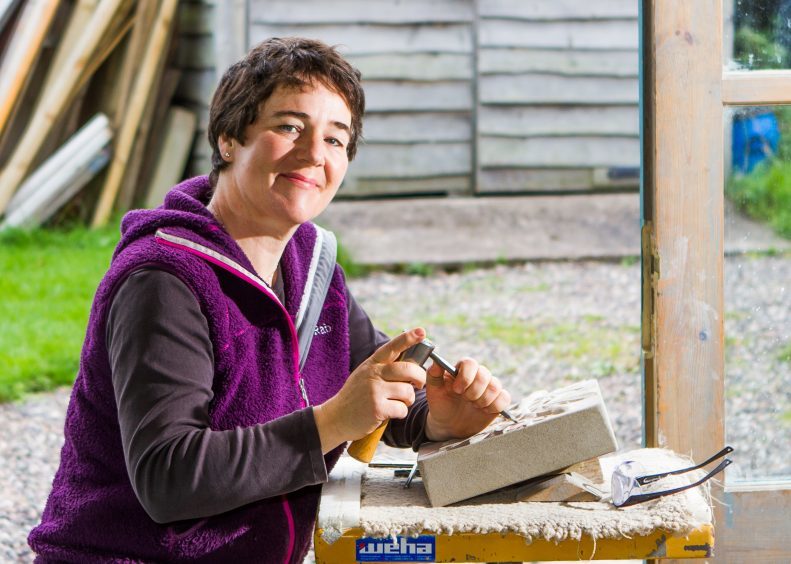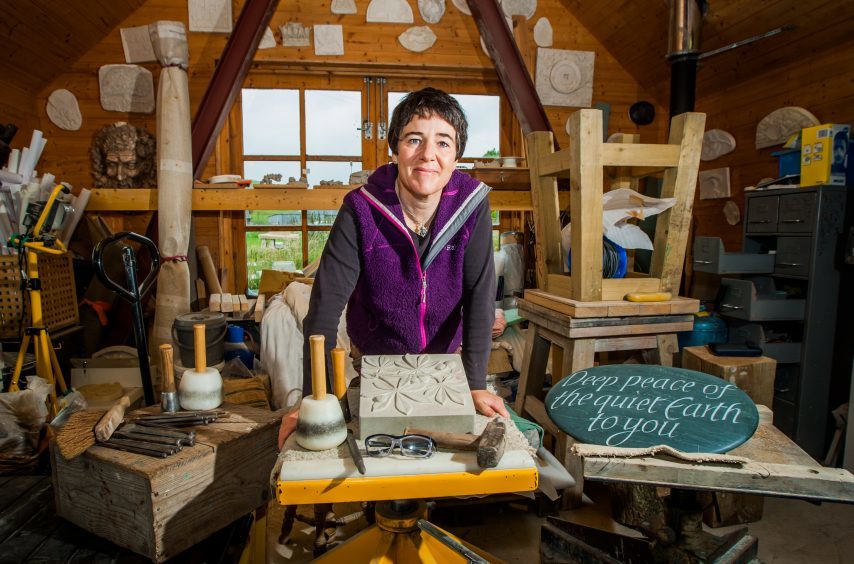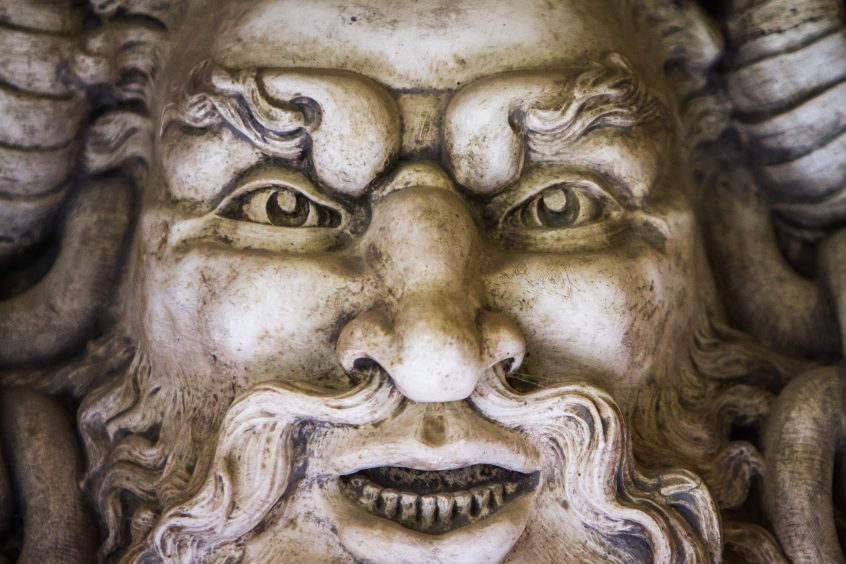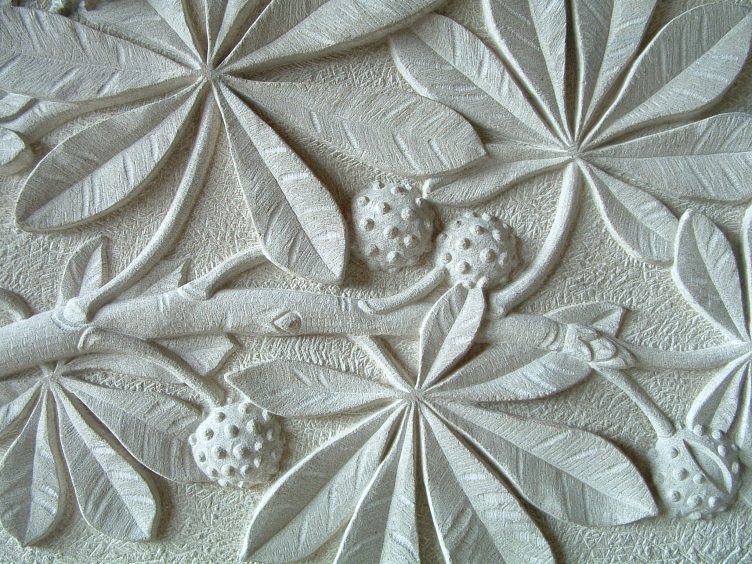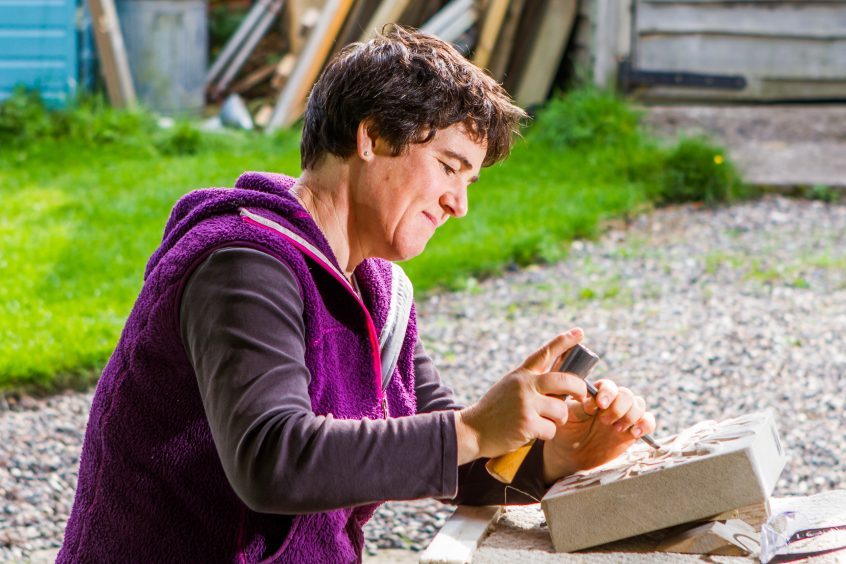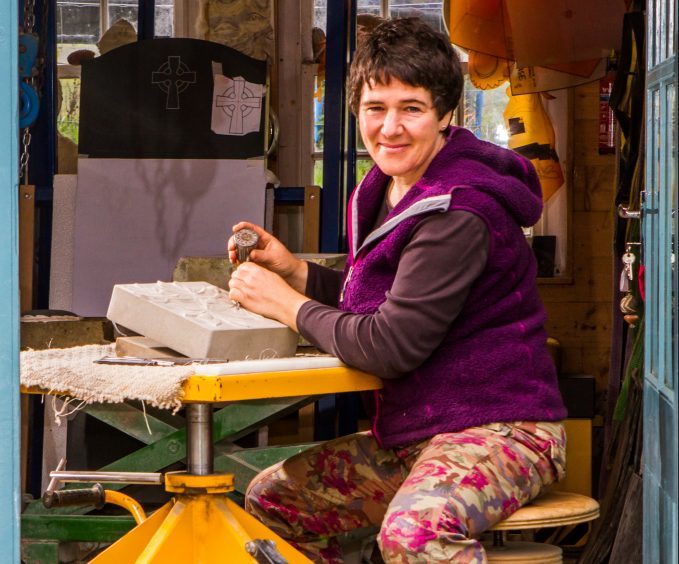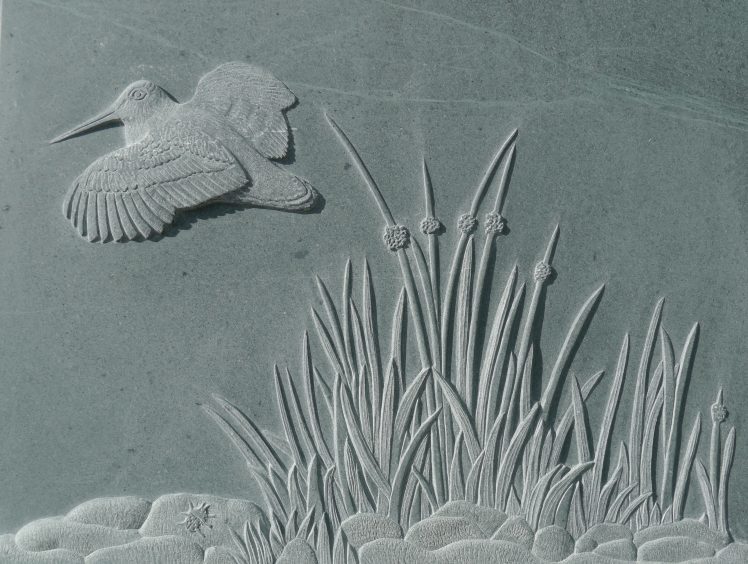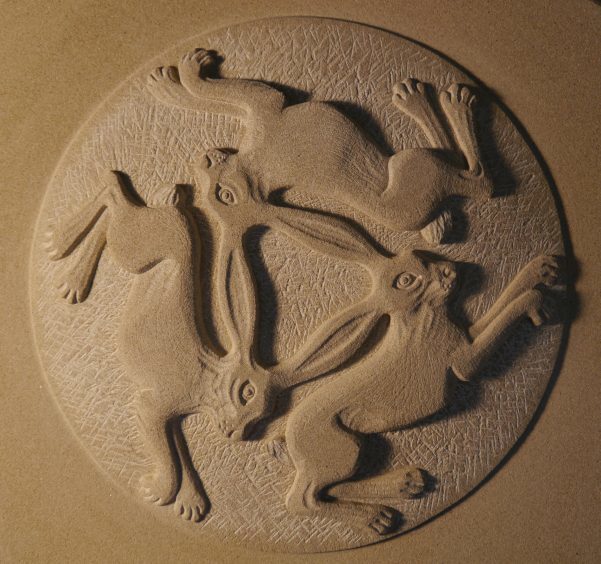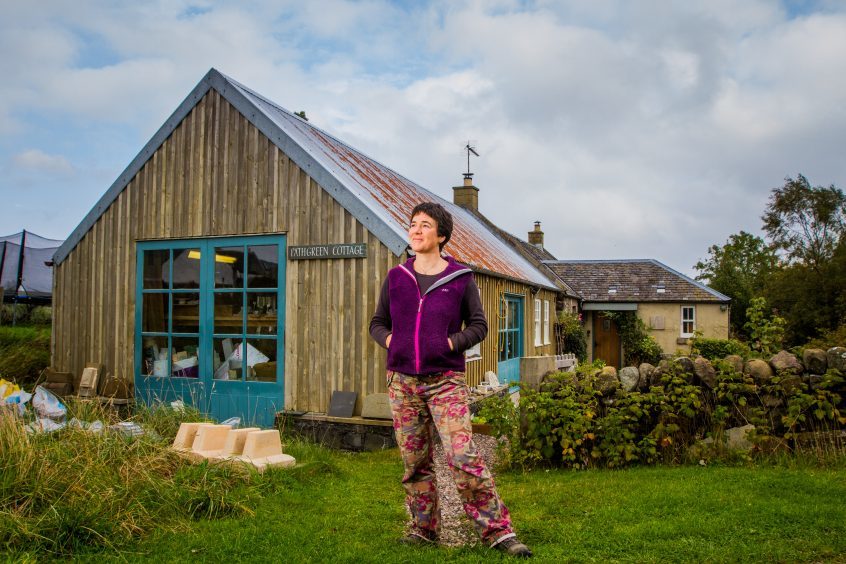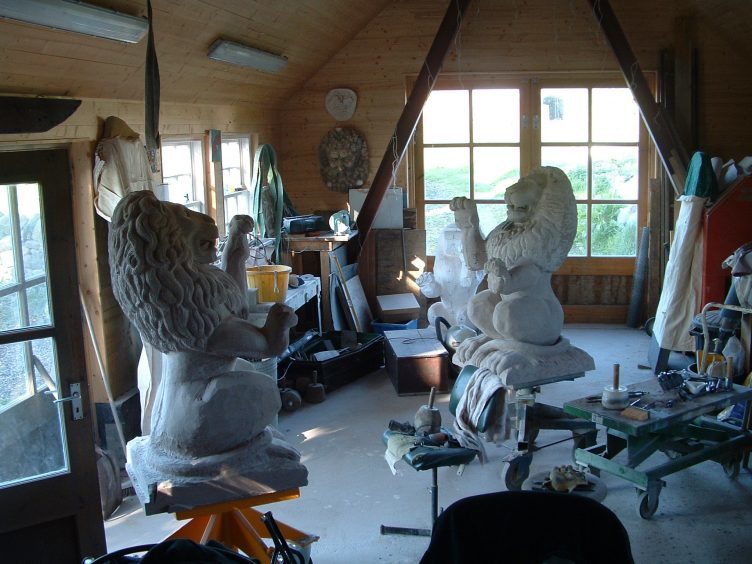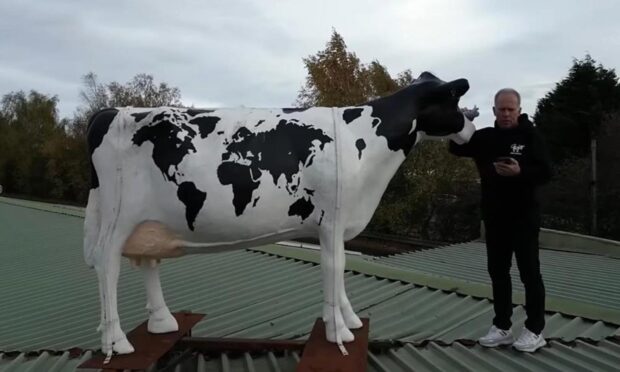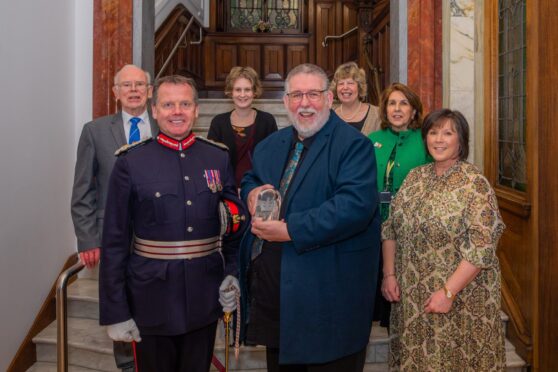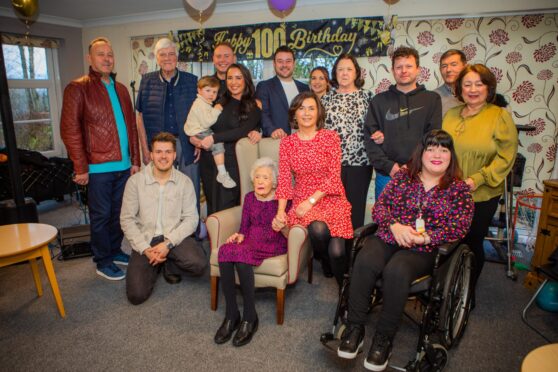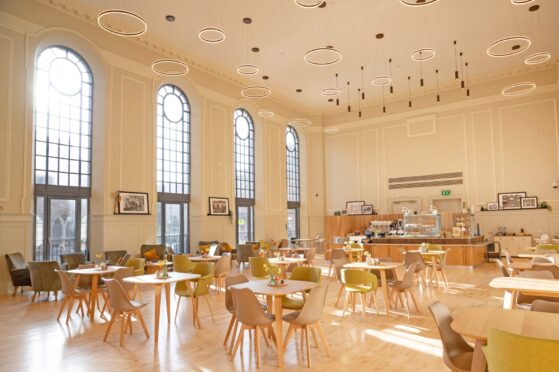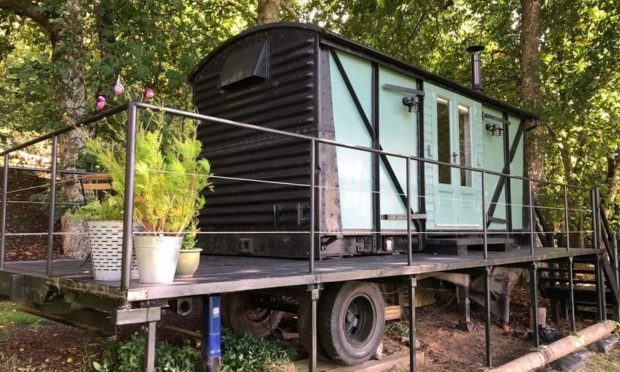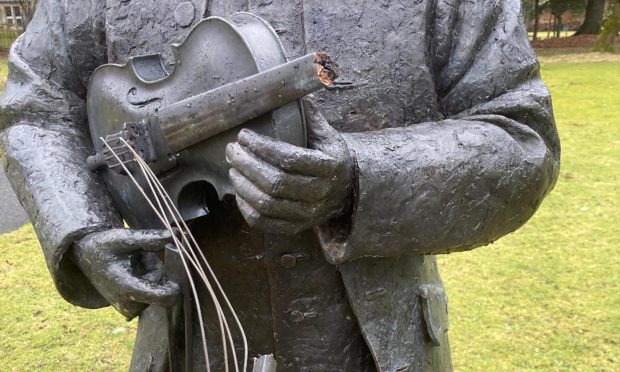As a long-established stone carver, Gillian Forbes has spent years working on high profile public art projects across Scotland. But these days she concentrates on bespoke gravestone design from her remote workshop in Perthshire. Michael Alexander met her at home in Path of Condie.
The walls of Gillian Forbes’ bright and breezy purpose-built workshop – attached to her 18th century cottage high in the remote hills at Path of Condie – are an eclectic clutter of ornate stone carvings, rubbings from gravestones and dried leaves.
The floor is stacked with a variety of tables, trollies and a saw bench for cutting up stone slabs, while a giant winch hangs from the ceiling allowing her to lift heavy stonework straight from the back of her vehicle into the workshop below.
Here in the Perthshire hills, at the top of a steep narrow winding road between Dunning and Milnathort, Gillian enjoys the relative solitude of her trade while having relatively easy access to her stone suppliers and customers.
Over the years she has been involved in a number of high profile art projects including the carving of the stone lions at the gates of Glamis Castle, the carvings on the Perth flood prevention scheme on Tay Street and the collecting and carving of lettered panels on the Canongate Wall at Holyrood in Edinburgh.
In 2005 she secured the QEST (Queen Elizabeth Scholarship Trust) Award to study with a French stone carver – Marc Chevalier LaCombe and in 2008 embarked upon a similar project in Italy to learn to carve marble.
Today, however, Gillian concentrates on carving bespoke gravestones for high end customers across the UK and balances this with being a full time mum to seven-year-old son Callum and a wife to Douglas who works for the Forestry Commission at Dunkeld.
“A lot of the time the people who come to me for gravestones have been to a monumental mason and know exactly what they don’t want,” says Gillian over a cup of tea as the watery autumnal sun streams into her workshop and the wind swirls outside.
“They don’t want a black gravestone with gold lettering which is fairly standard nowadays. What I do is try to create what they do want. Often people want designs that incorporate foliage or something that involves a special plant. It could be a bit of Celtic knot work.
“Some of the carvings can take literally weeks to do. Other times it’s just a few days of delicate incised carving.”
Raised in Edinburgh and Dunfermline, Gillian, 50, studied at Glasgow School of Art.
She did her dissertation on Scottish grave stones, and because she was living in Dunfermline at the time one of her subjects was the Dunfermline Abbey and its “amazing” stones in the graveyard.
When she was 21 she went to live in Vienna with her then boyfriend.
Inspired by the architecture and stone, when she came back to Glasgow, she met a monumental mason, now aged 81, who taught her everything he knew.
“It was then I found out about a course in architectural carving and stone masonry at Weymouth College in Dorset,” she says. “So in 1992 I went down to study there for two years. It was an amazing course because it was exactly what I needed to find out. Even though art school had been a good grounding, being that little bit older and finding out what I wanted to do was just fantastic.”
Gillian initially set up her business in a rented barn at Milnathort, where her parents live, in 1995.
She moved to Path of Condie shortly after and, 22 years later, she now offers headstones comprising mostly sandstone from Yorkshire and slate from the Lake District, but sometimes Caithness stone and a bit of granite.
“The stones I’m working with will change in colour, will become patinated and will look natural,” she says.
“They are natural stones. Some will have natural faces as in straight out of the quarry and other ones will be shaped but they will always change in colour to some degree.
“What I do is so different and bespoke so clients can decide how the stone will look and they help design it.”
Gillian has a website but she says most of her clients get in touch through word of mouth
“I always get clients to come here,” she says. “It seems quite pedantic to do that but they need to see what happens here because it’s such a physical thing.
“Usually in the workshop there’s about three or four stones on the go and they can understand this is not just an afternoon’s work. My stones cost between £2000 and £7000 for a head stone.
“It’s all governed by the cost of the material. For example slate is twice as expensive as sandstone. It’s also governed by the number of letters, the scope of the design, the amount of carving. My typical client is discerning and is looking for a memorial which will be fitting for their loved one.
Gillian has visited graveyards all over Scotland and has become something of an expert on the different council regulations that apply concerning stone heights and designs.
While she didn’t always feel that her public art work was appreciated , what she enjoys most about gravestone carving is the relationships she builds with the families of deceased and the fact she is helping provide a personal, permanent memorial for someone who is gone.
“It’s quite humbling really,” she says.
“My brother died last year and I made his headstone. I think until I’d done his I didn’t realise how important it was to really think about what that person would have liked and to make something that somebody can visit.
“Obviously nowadays if people get cremated there can be nothing to visit.
“I get lovely letters back or get some great feedback because it is so important for them to have something to visit. That’s why I do it because you get thanked. You don’t always get thanked when you do public art and I really like that. You get paid, you get thanked, and you’ve made something beautiful that’s changed their situation.”
Gillian is also grateful to her neighbours and local businesses. Built by Tibbermore joiner Dougie McIntyre in 2003 and constructed around a gantry made by Koronka Manufacturing in Kinross, her workshop is now half the size it once was to create extra living accommodation in the house.
It was built so she could have a big area to work in but also so she could reverse in to the double doors at the side and offload stones safely.
Gillian, who is a member of the Scottish Lettercutters Association and was recently filmed for a CBeebies children’s programme, says there are great advantages working with stone in a remote area. She has to be careful with dust and in the summer she can simply do her angle grinding outside.
But despite the icy roads in winter, she wouldn’t live anywhere else.
“I’ve always thought it would be quite nice to live and work somewhere north of here,”she says.
“But I just realise Perthshire is very good because it’s so central. It’s always been that way that when clients have to come and see me it’s quite remote and hilly up here, but it’s not too far to get from anywhere.
“We are right in the middle between the Central Belt and the Highlands. Most people are absolutely stunned by where I live. In the summer it’s absolutely amazing. It’s just when we get to winter and icy roads that the problems can start!” she laughs.
- This article also appears in the winter edition of the Perthshire Living magazine.
